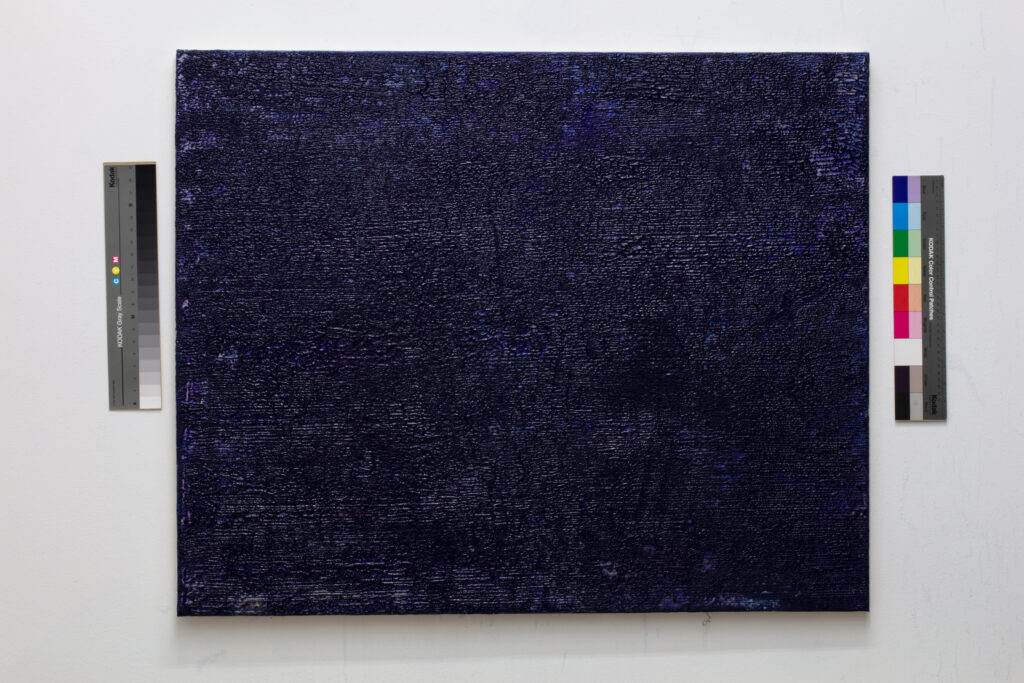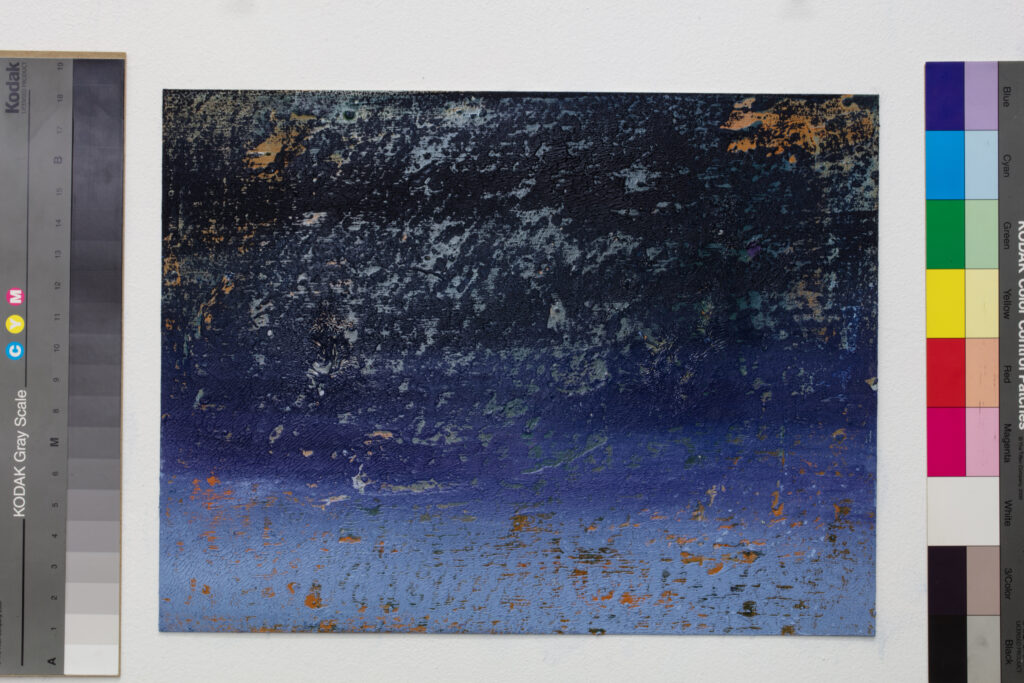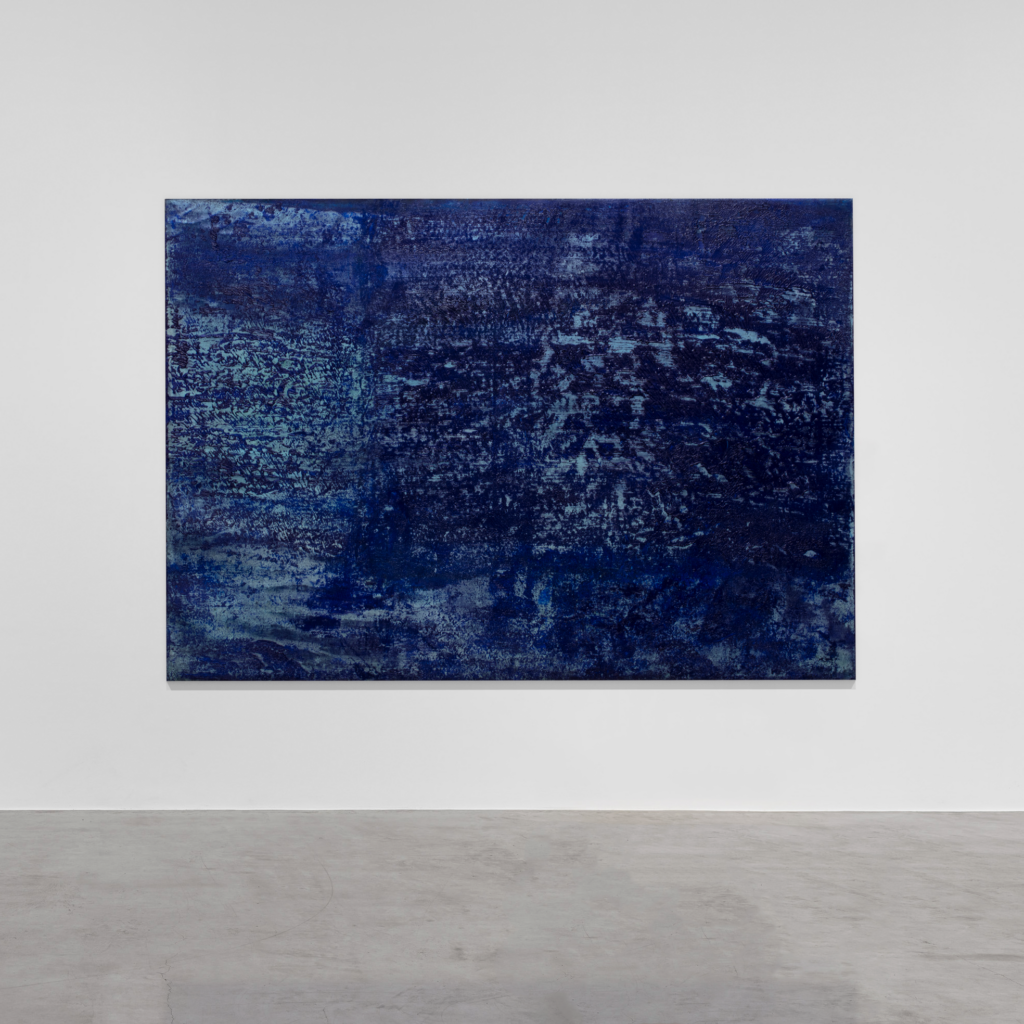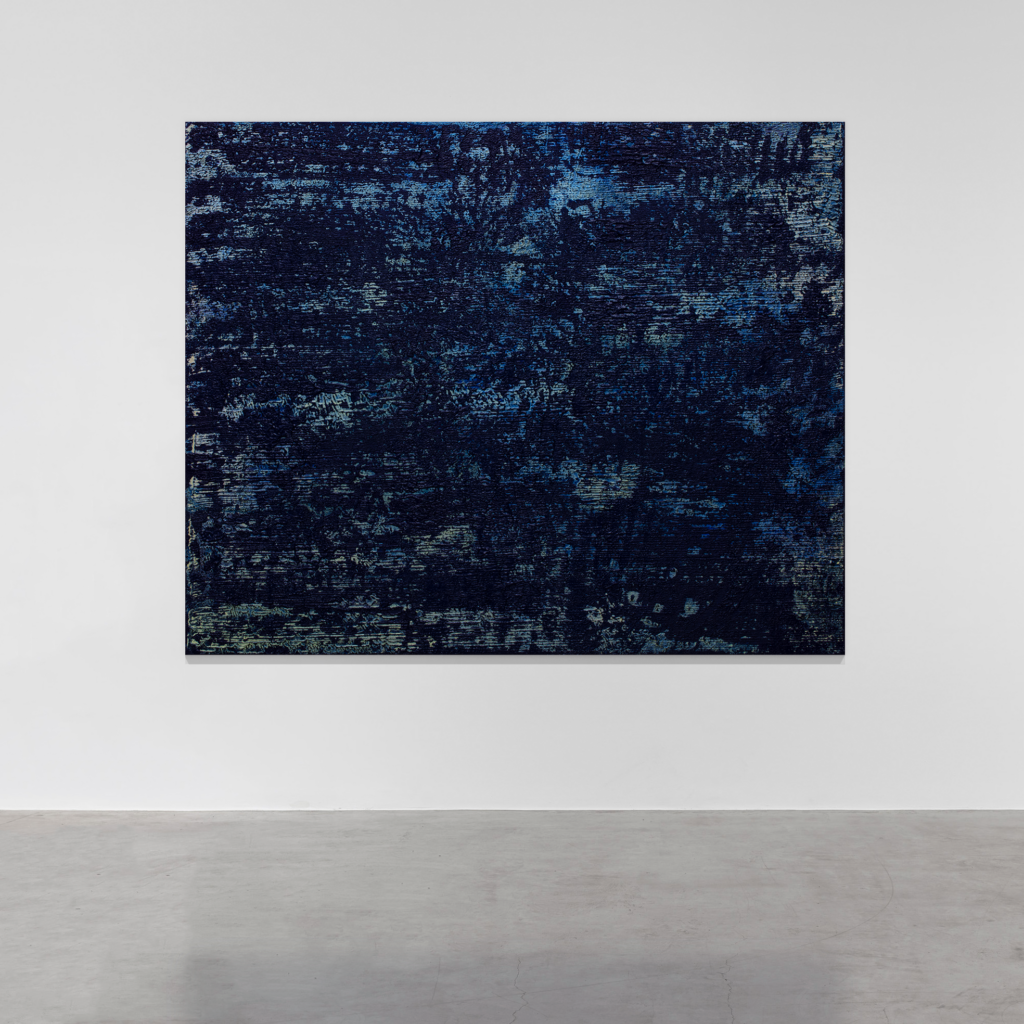Pablo González-Trejo, a Cuban-French-American artist, has been navigating the complex terrains of identity, nature, and the infinite since establishing his practice in France in 2006. His work is a profound meditation on entropy—both as a natural force and as a metaphor for the chaotic flux of existence. What began as an intimate exploration of identity has evolved into a sophisticated examination of how individuals and societies relate to the ever-changing fabric of our reality.
In the formative years of his career, González-Trejo instinctively distanced himself from the cultural enclaves that had once shaped and defined his identity. This deliberate detachment was not merely physical but also emotional and intellectual, allowing him to observe these communities with a newfound objectivity. By stepping away from the familiar, Pablo entered a period of self-imposed exile—a necessary phase that granted him the clarity to individuate not only his personal identity but also his artistic voice. This act of individuation can be likened to venturing into the cloistered solitude of the inner self, a journey marked by deep introspection and a willingness to confront the unknown. This solitude was not a retreat but a crucible for inner adaptation and growth, marking a crucial turning point in both his life and career.
This transformative process mirrors the entropic forces inherent in nature, where decay and renewal are part of the same continuum. Much like Gordon Matta-Clark’s “Cherry Tree,” where the decaying tree in a dark basement symbolizes the fragile impermanence of life, Pablo’s journey became one of finding profound meaning in transformation. His artistic evolution was not linear but cyclical, echoing the natural process where destruction leads to creation, and loss gives way to regeneration. Pablo’s abstract art becomes political; it challenges viewers to understand something different, it interrogates perception, it works at crystallizing realities—forcing viewers to confront the delicate balance between permanence and impermanence.
A powerful expression of this philosophy emerged in one of his earliest intimate performances with his family, where they collectively defaced socialist icons. Far from being an act of mere destruction, this performance was a cathartic act of rebirth—a symbolic severing from the past that paved the way for new beginnings. It was here that the seeds of his ongoing “Defacing” art projects were sown, where the act of erasure became a central motif in his work. In these projects, the defacement of artworks is not an act of negation but a deliberate engagement with the concept of transformation. By erasing and altering his own creations, Pablo embraced the very essence of entropy, acknowledging the transient nature of existence and the inevitability of change. Each act of erasure was a step in a larger process of evolution, where the past was not discarded but reconfigured, allowing new meanings to emerge.

Between 2006 and 2013, Pablo orchestrated his “Defacing Art Project,” a series of social performances that directly confronted the forces of entropy. Held in contemporary art centers in Miami and Paris, these events invited the public to deface or erase large-scale, politically charged paintings. The aim was to compel participants to confront the social and political demons embedded in these politically and historically resonant images. Through this process, Pablo’s abstract art became inherently political, challenging viewers to see through new perspectives, interrogating their perceptions, crystallizing new realities and artistic possibilities. As participants engaged in the symbolic destruction and reconstruction of these images, they were challenged to confront their own belief systems. The act of defacement became a powerful metaphor for the entropic forces that dismantle and reshape our social fabric, encouraging a collective reimagining of history, memory, and their continuing influence.
Pablo’s life and work epitomize the concept of the Radicant, as theorized by Nicolas Bourriaud—a notion that has profoundly shaped his artistic journey since 2010. The Radicant artist, like a plant extending its roots into diverse terrains, continually adapts to new environments, absorbing and integrating various cultural influences. For Pablo, this idea solidified a guiding principle that had been present since the 1980s, facilitating his transformation into a nomadic figure. He embraced the fluidity and adaptability inherent in the Radicant concept, allowing his art to evolve organically as he traversed different cultural landscapes such as Miami, Seoul, Barcelona, and Paris.
This approach turned Pablo into a cultural bridge-builder, bridging disparate traditions, diverse histories, and innovative ideas. His work actively resists entrenched narratives of modernism, often tainted by colonialism and Eurocentrism. By rooting himself in multiple cultural contexts, Pablo challenged these hegemonic perspectives, offering a pluralistic and inclusive vision of art. His creative process became a dialogue between cultures, a continuous exchange that defied rigid or singular interpretations and embraced the complexity of our globalized world.
Pablo’s artistic practice exists in a state of constant flux, reflecting the entropic nature of existence itself. In a world where entropy dictates that nothing remains static, Pablo’s art reminds us of life’s impermanence and transience. His works actively challenge entrenched norms, questioning the fixed categories and hierarchies that have long dominated the art world.

Through his Radicant approach, Pablo redefined the role of the artist—not as an isolated genius but as a cultural connector who navigates the ever-shifting terrains of identity, history, and nature. His art becomes a living, breathing entity, continuously evolving as it encounters new contexts and ideas. In this way, Pablo’s oeuvre is a testament to the power of adaptability and the creative potential that lies in embracing the unknown. His work invites us to reconsider our own place in a world where change is the only constant, urging us to find meaning in the spaces between cultures, where new possibilities for understanding and expression arise.
In recent years, Pablo has delved deeper into the concept of “recouvrement,” a technique involving the layering and obscuring of surfaces that mirrors the natural processes of decay and rebirth. His canvases, cloaked in layers of pigment, both reveal and conceal, akin to the erosion depicted in Ariel Schlesinger’s “Untitled (Burnt Canvas).” These layers invite viewers to explore the tension between the visible and the hidden, a reflection of the entropic forces that shape our universe. His work transcends visual experience, becoming a philosophical inquiry into the nature of existence. Each layer of pigment represents a stratum of reality, perpetually uncovered, erased, and redefined, reflecting the ongoing process of transformation and renewal.
Pablo’s early works, especially his graphite paintings, aimed to capture the primeval landscapes of our civilization. Over time, these landscapes have evolved into representations of entropic forces, guiding us toward the vast, unmeasurable cosmos. Much like Mark Bradford’s collages, which use layers of materials to reflect urban decay and transformation, Pablo’s figurative works depicting the forests and wild landscapes of Andalusian Spain and South Korea transcend mere representation. They become meditations on entropy, where graphite pigments dissolve representation, with tree trunks and natural forms emerging from and being swallowed by darkness. This interplay of line, splash, and graphite powder evokes the layering and erosion seen in nature, mirroring the transformative processes found in Bradford’s work and the entropic decay explored in Matta-Clark’s “Cherry Tree.”
Pablo’s fascination with color and transparency, particularly in shades of blue and purple, allows him to explore undefined spaces, much like Dana Powell’s contemplative “Storm Moon,” which reflects chaos and the architecture of the universe in the celestial. For Pablo, painting transcends mere creation; it becomes a process of experiencing the vibration of color—a pure retinal enjoyment that ventures into the metaphysical. His work delves into surfaces, depths, and the interplay of light and color, transforming each canvas into a microcosm of the infinite universe.

Through his use of pure pigments and the deliberate thinning of colors, Pablo’s paintings articulate a vision of an infinite and multifaceted universe. Each canvas represents a step in his quest for purity and absoluteness in pictorial form, whether navigating figuration or abstraction. The goal remains consistent: to touch the Ether—the celestial space of absolute purity, vibrating under the influence of light, akin to Nina Canell’s exploration of energy transfer. The interplay of light and color in Pablo’s work, where pigments act as prisms refracting and reflecting light, suggests that some hues may exist only in the mind’s eye. This notion echoes the esoteric imagination of the 1970s and the quest for transcendence, highlighting the subjective experience of art in a universe of constant flux.
“You cannot fight entropy,” wrote Peter F. Hamilton in The Neutronium Alchemist. This recognition of the inevitability of chance and transformation in art resonates deeply with Pablo González-Trejo’s practice. Pablo embraces the concept that a “string of light adds a unit of entropy to the universe” as a guiding principle in his work. He believes that light, as it interacts with his paintings, not only adds to the entropy but also plays a role in balancing the universe depicted on his canvases.
Ultimately, González-Trejo’s work transcends a mere reflection of entropy to become a profound celebration of it. His art is a testament to the inherent beauty found within the constant flux and disorder of existence. By exploring the concept of entropy, González-Trejo does more than depict the inevitable processes of disintegration and transformation inherent in life; he elevates these processes to a realm of sublime beauty. His canvases, rich with layers of pigment and complex textures, invite us to find beauty in impermanence and transformation. Through his artistic practice, González-Trejo encourages us to embrace the dynamic, ever-changing nature of reality, revealing how the interplay of decay and renewal can illuminate deeper truths about our existence.
His work challenges us to see beyond the material and recognize the subtle, often elusive beauty that emerges from the process of becoming and unbecoming, urging us to appreciate the sublime aspects of a world in constant flux.
